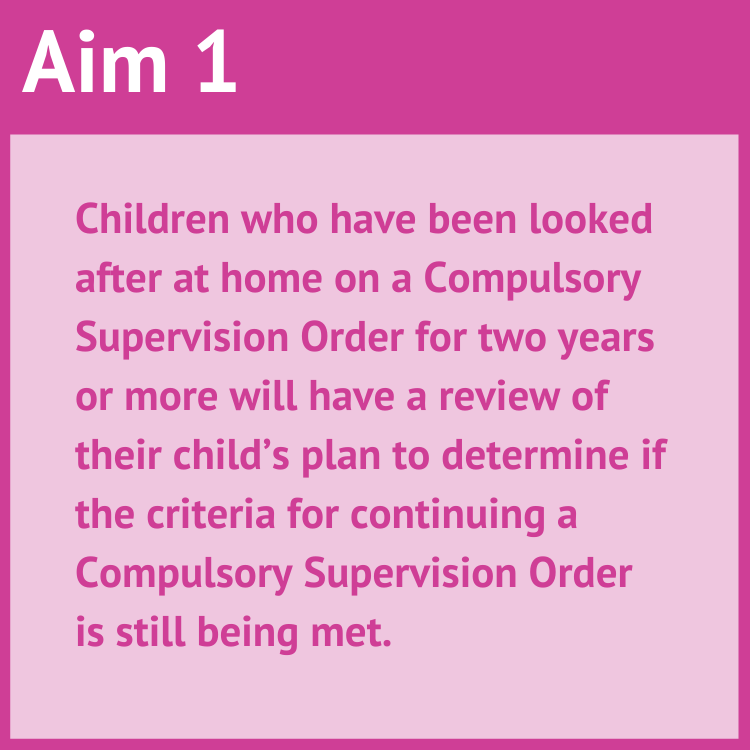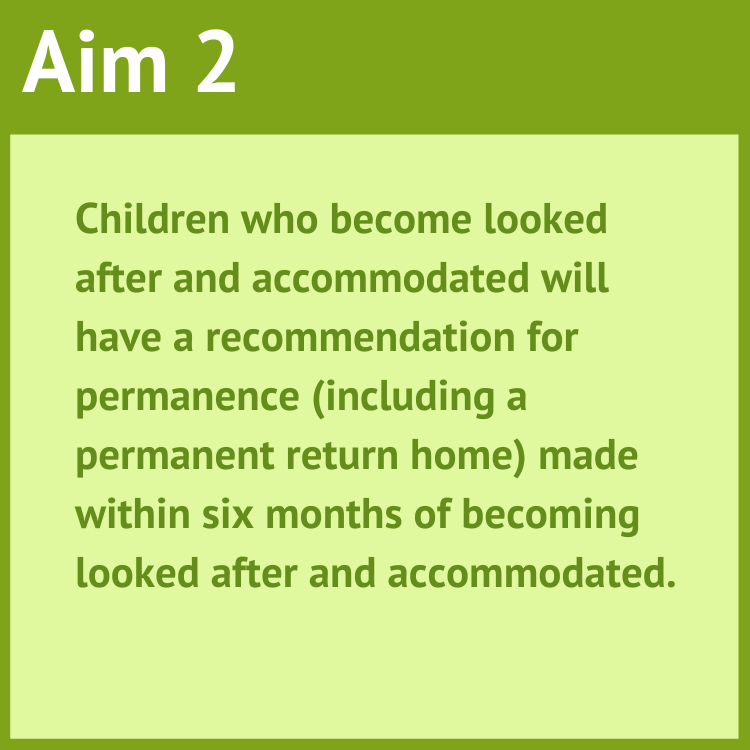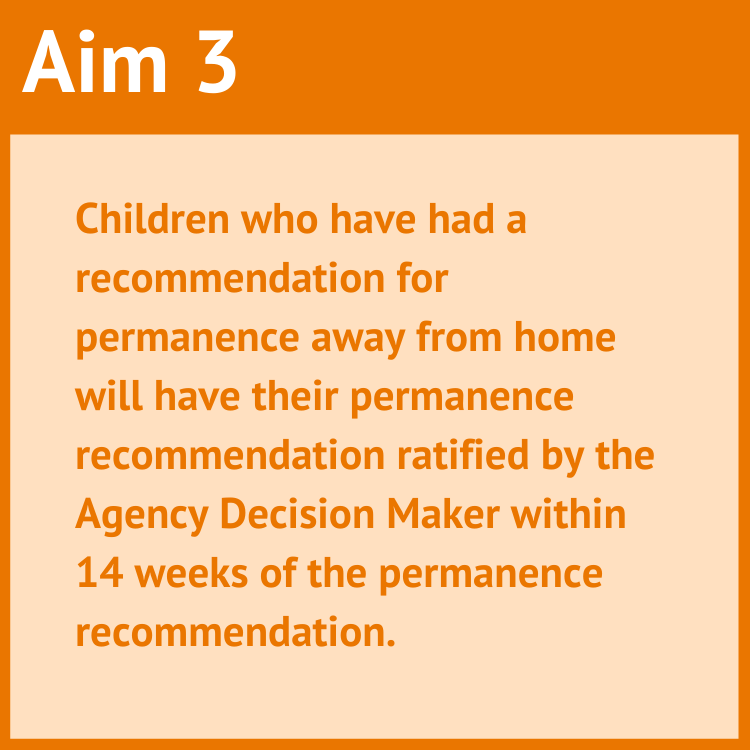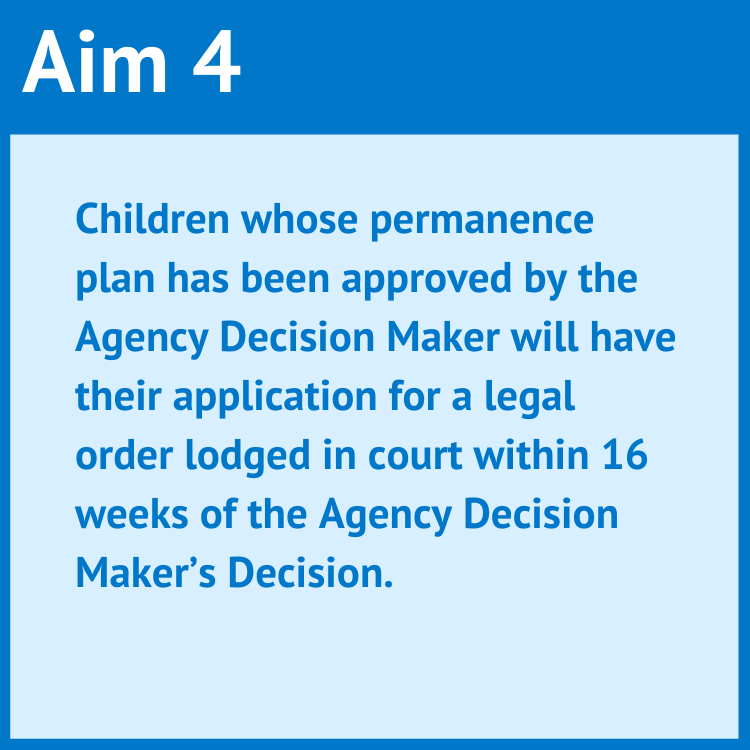
If you are not familiar with Quality Improvement and/or permanence, we recommend you watch these two webinars first. In PACE and Permanence, Linda Davidson, Permanence Consultant at CELCIS discusses why finding safe, secure and stable homes for children is so important. In PACE and Quality Improvement, Kirsty Doull, Acting Permanence Lead and Permanence Consultant at CELCIS, talks us through the key points of Quality Improvement and how it was used in the PACE programme.

PACE and Permanence
Watch the permanence video
PACE and QI
Watch the QI videoPACE: the first steps
This section is an opportunity for people interested in the PACE programme to familiarise themselves with why PACE came about, how it was set up, and hear about some of the key things learned along the way, which may help inform future change programmes.
In addition to an overview of the PACE programme with Carol Wassell, Permanence Programme and Permanence and Care Team Lead at CELCIS from 2012 – 2020, viewers will also find webinars that provide a detailed analysis of the four national PACE aims, including the key change ideas that led to improvements in permanence planning.

The PACE programme: an overview
What is PACE, how did it come about, who was involved and what did we learn from delivering the programme? In this webinar, Kirsty Doull, Acting Permanence Lead and Permanence Consultant at CELCIS, is joined by Carol Wassell, Permanence and Care Team Lead at CELCIS from 2012 – 2020. Together, they look back at the PACE programme from start to finish, and reflect on what the team learned along the way.
View the transcript and extra materialHow the national PACE Aims developed




In the early stages of PACE, each local authority area developed one or two aims and worked on these for the duration of the programme. However, as PACE progressed, the CELCIS team realised that it would be more beneficial to have aims that covered all parts of the permanence planning process and all ‘looked after children’ under child protection legislation, as well as having aims that all local authority areas involved in PACE worked on to give a degree of consistency across Scotland. As a result, the four national PACE Aims were developed.
Whilst the PACE Aims have suggested timescales (which are in line with statutory timescales and Scottish Government guidance), these timescales were then amended in each local authority area to reflect how their local systems were operating, having been informed by their local baseline data. In this way, all local authority areas involved in PACE were working towards national aims that had been adapted to reflect their individual circumstances.

PACE: Aim 1
The PACE programme focused on all children, regardless of where they lived, including children who were ‘looked after’ at home on a Compulsory Supervision Order (CSO). Scottish Government guidance states that a child should not usually remain on a CSO for more than two years. Aim 1 focused on children who had been on a CSO for two years or more, and introduced a further review of their plan to determine if such compulsory measures were still necessary. In this webinar, Jimmy Paul, Permanence Consultant at CELCIS, discusses the importance of Aim 1 and its impact on children and families.
View the transcript and extra material
PACE: Aim 2
Scottish Government guidance states that there should be clarity for the direction of a child’s plan within six months of them being ‘accommodated’ i.e. living away from their parent’s care. This was the main focus of Aim 2 of the PACE programme, which looked at making a permanence recommendation about where a child should live (including a permanence return home) within these six months. In this webinar, Jimmy Paul, Permanence Consultant at CELCIS, discusses the importance of Aim 2 and its impact on children and families.
View the transcript and extra material
PACE: Aim 3
Scottish Government guidance states that the Agency Decision Maker in a local authority should agree a child’s permanence plan within 14 weeks of a permanence recommendation being made. This was the main focus of Aim 3 of the PACE programme, which looked at this part of the process, including the assessments and reports that are required in order to scrutinise a child’s permanence plan. In this webinar, Linda Davidson, Permanence Consultant at CELCIS, discusses the importance of Aim 3 and its impact on children and families.
View the transcript and extra material
PACE: Aim 4
Once a child’s permanence plan has been approved by the Agency Decision Maker, the next step is to provide legal security for a child in what will hopefully be their permanent home. This was the main focus for Aim 4 of the PACE programme, which looked at the process after an Agency Decision Maker’s decision up until an application for a legal order has been lodged in court. In this webinar, Jimmy Paul, Permanence Consultant at CELCIS, discusses the importance of Aim 4 and its impact on children and families.
View the transcript and extra materialAdditional resources and further reading
PACE: the first steps
Below are some additional resources to sit alongside the PACE: the first steps page.
- Permanence flowchart
- Child Protection System Map
- Throughcare and aftercare map
- Four Routes to Permanence Poster
- Children's Permanence Leaflet
- Leaflet template: what we mean by permanence
- Looked After at Home Review Cycle diagram
- Permanence Peer Review Form template, Aim 1
- Questionnaire for Reviewing a Child/Young Person’s Plan to Renew their Compulsory Supervision Order (CSO)
- 2 week child's planning meeting checklist
- Agenda for 2 week child's planning meeting
- Diagram of abbreviated permanence timescales
- Guidance document of the process for a child becoming accommodated pre the permanence review
- Guidance document showing tasks to be completed prior to permanence panel
- Looked After Child review process information leaflet for parents
- Legal advice in permanence planning
- Permanence timescales diagram
Using Quality Improvement
Below are some additional resources to sit alongside the Using Quality Improvement page.
- Forcefield Analysis template
- Driver Diagram template and IHI guidance
- Template for process mapping
- Fishbone template
- Plan, Do, Study, Act (PDSA) template
- Self-sufficiency template
- Scottish Government 3-step improvement guide
- PACE programme change ideas: key examples
- Tried and tested 2018: Local changes that are improving children’s lives through the Permanence and Care Excellence (PACE) programme (2018)
- Beyond The Headlines: Understanding Data (2020)
Timeline resources
- Timeline 'how to' guide
- Timeline example spreadsheet
- Timeline XY chart labeler description
- Child shadows images for use on timelines
- Timeline placement chart details
Permanence in practice
Below are some additional resources to sit alongside the Permanence in practice page.
- Concurrency: Planning for all outcomes (November 2016), Carol Wassell, Permanence Programme and Permanence and Care Team Lead, CELCIS.
- Case for Concurrency Planning (2013), Carol Wassell, Permanence Programme and Permanence and Care Team Lead, CELCIS.
- Pre-birth assessment guidance
- Pre-birth risk/needs assessment
- Pre-birth assessment tool
Voices from PACE
The videos and resources below share the voices of some of the people and organisations involved in the PACE programme.
Gathering PACE events
- Gathering PACE 2018: Resources from the 2018 Gathering PACE event.
- Gathering PACE 2017: Resources from the 2017 Gathering PACE event.
Aberdeen City Council
- Small changes reduce delay in permanence decisions by over 12 weeks (REACH magazine, 2016): Graeme Simpson, Chief Social Work Officer at Aberdeen City Council, explains how small tests of change added up to cutting three months off the time it takes to make decisions for children in their care.
Aberdeenshire
- A Children's Reporter reflects on the impact of PACE (REACH magazine, 2016): Anne MacKenzie, a Children’s Reporter in Aberdeenshire, reflects on the impact of PACE on her work and that of those around her, and on the children they help.
City of Edinburgh Council
- Kinship care: a sense of belonging, a sense of security (REACH magazine, 2016): Kim Irwin, Independent Kinship Care Assessor at City of Edinburgh Council, discusses a three-month-long assessment of kinship care placements.
East Renfrewshire Health and Social Care Partnership
- Planning starts at a very early stage in East Renfrewshire (REACH magazine, 2016): Ruth Nairn, Child Protection Consultant at CELCIS, explains how planning starts at a very early stage.
- What drift and delay really means for children (REACH magazine 2016): Lisa McKenzie, East Renfrewshire Health and Social Care Partnership discusses the improvements they made with the help of PACE.
Dumfries and Galloway Council
- Understanding children's journeys (2018): Alison Penman, Locality Social Work Manager from Dumfries and Galloway Council, explains how her team has been able to use data to help visualise a child's journey through care.
Orkney Children's Panel
- PACE is a real eye opener for Orkney Panel Member (REACH magazine, 2016): Calum Swanson, a member of the Children's Panel in Orkney, explains the difference the PACE programme has made to him and the Children's Panel in Orkney.
Renfrewshire Council
- Case Study: Sometimes the permanent placement is back home (REACH magazine, 2016): Cathie O'Donnell, Renfrewshire Council, explains how through the work of the PACE programme and a multi-disciplinary team, a young boy was able to return home to his family.
Shetland Islands Council
- Visualising the difference (2018): David McQueen, Team Leader, Family Placement Services at Shetland Island Council, explains how data is being used to help support decision making for children and young people in Shetland to achieve better outcomes.
CELCIS
- Contact with their past can give children a sense of belonging (REACH magazine, 2016): Carol Wassell, Permanence lead at CELCIS, works with local authorities and other agencies to help ensure children get good permanent placements as soon as possible.
Blog posts
The blog posts below share the voices of some of the people and organisations involved in the PACE programme.
- Considered but timely decision making is vital for children (November 2019): Stephen Small, Director, St Andrew’s Children’s Society.
- PACE is changing (March 2019): Carol Wassell, Permanence Programme and Permanence and Care Team Lead, CELCIS
- Information is power (September 2018): Laura Conachan, Projects Lead, Children’s Hearings Scotland.
- Infants may not be able to speak but their voice is important (October 2017): Linda Davidson, Permanence Consultant, CELCIS.
- Children can easily become lost in the system, but a timeline can help you see them (February 2017): Linda Davidson, Permanence Consultant, CELCIS.
- A Passion for Permanence (November 2016): Aileen Nicol, Head of Improving Permanence and Protection, CELCIS.
- Knowing what we need to know, when we need to know it (November 2016): Diana Beveridge, Improvement Advisor, Scottish Government.
- Legal opinion: We can do our bit to cut down drift in permanence planning (November 2016): Jennifer McKearney, Principal Solicitor, Aberdeenshire Legal and Governence Department.
- Concurrency: Planning for all outcomes (November 2016): Carol Wassell, Permanence Programme and Permanence and Care Team Lead, CELCIS
- Peer support is empowering social workers in East Renfrewshire (November 2016): Lesley-Ann Stewart, Social Worker, East Renfrewshire.
- Case study: Dumfries and Galloway Council's work with PACE (November 2016): Mareen Vernon, Dumfries and Galloway council.
Return to the Quality improvement page
View the 'Using Quality Improvement' recorded webinars
Return to the PACE homepage
Return to the Permanence in practice page


